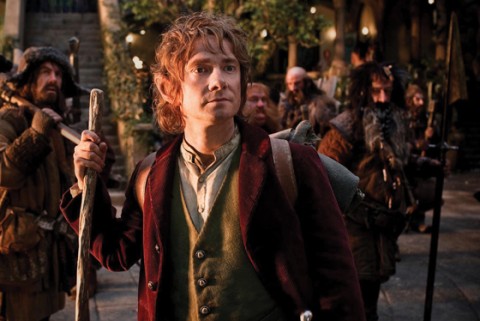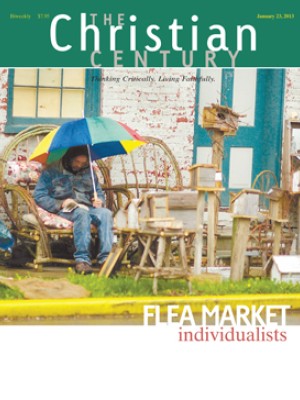Longing for home

"In a hole in the ground, there lived a hobbit.” With that sentence, J. R. R. Tolkien drew us straight into Bilbo Baggins’s home and into a Middle-earth in which home and the loved ones in it matter. The film The Hobbit, produced and directed by Peter Jackson, eventually quotes Tolkien’s opening sentence, but it takes some time to get to that point. It starts, instead, with Bilbo (played with tender humanity by Martin Freeman) recounting some prehistory to explain the expedition that will lead him to the dragon Smaug.
Jackson begins, then, not with home and a hobbit hole but with fiery destruction, war and exile. The dwarves, like the people of ancient Israel, have been doomed to wander in the wilderness, refugees from the Lonely Mountain. These dwarves (led by Richard Armitage playing a magnificent Thorin) are on a quest, not first for gold but for home, and the film plays up the theme of home, alongside more familiar Tolkien themes of adventure and the importance of small, ordinary folk standing against evil. The relational tension resolves when Bilbo expresses to Thorin his sense that the dwarves deserve what he has in the Shire—a home. Jackson has embroidered Tolkien’s text here, but it fits with the story.
Read our latest issue or browse back issues.
Unfortunately, the film does not consistently pursue this theme of home. It seems odd indeed for the filmmakers to inflict 20 minutes of dragon fire on viewers before leading them through that round, green door into Bilbo’s house. Why must we see a little girl watch her doll burning before we are treated to the unexpected party in the wood-paneled hobbit hole? Why start with slaughter instead of a dinner party? Why make war the driving engine of the film?
When made the center of the story, the themes of pursuit and battle in The Hobbit become a bit absurd. As the dwarves and Bilbo descend into the goblin lair, the world under the mountain is at first fun to behold: the decadent darkness is lit by sparse fires, and rickety wood structures go down into the deeps. But the unfolding scene becomes silly by the time the dwarves—for the umpteenth time—leap off a burning bridge in the nick of time while orcs fall screaming to their death. The same quality of having been pushed too far mars the final chase scene, which ends with burning trees falling like dominos and a rescue by an eagle that is pushed cartoonishly to the last possible moment.
All this pursuit-and-battle material is based on Tolkien, no doubt, but it also panders to a demand for cliff-hanger violence. It reflects unimaginative ideas about what might make stomachs drop when watched in 3-D. To be clear: there are battles in Tolkien’s text, but they do not drive the story. It’s driven instead by relationships, the transforming power of adventure and, finally, the treasuring of home through eyes made new by the journey.
The film suffers from being turned into a prequel to the Lord of the Rings movies. It includes a forced backstory designed to connect to the Ring series. Rather than content itself with subtle foreshadowing, it shouts out the import of the ring, the necromancer and the shadow in the wood. The film also suffers from the decision to turn The Hobbit into a trilogy of films. All that extra backstory has to go somewhere, and forced to stretch across three movies, it will have to carry an awful lot of weight.
The film is not without its charms. Thorin’s company of dwarves are delightful. Each sports his own intricate arrangement of hair, beard and braids, and though it takes stubborn Thorin some time to come around, the group as a whole welcomes their hobbit burglar with generous but unsentimental liberality. When the dwarves sing Tolkien’s lyrics, bass layered upon bass upon bass, the result is truly beautiful. The scenery—familiar from the Rings movies—is a character in its own right, and the rendering of the Shire is visually perfect.
I am not insisting that film adaptations slavishly follow the books that inspire them. To move between media is a challenging task, requiring a transformation of the original to fit the new storytelling format. Such work is analogous to the church’s task of living out the text of scripture: it requires faithfulness to the text along with a transformation fitting for a new time and place. Wooden repetition will not do. But it is not surprising that viewers who love the book will object to violations of the text—and in this case much of the film violates the spirit of Tolkien’s book. By contrast, Jackson’s riff on home is the right kind of loving transformation of the narrative. The movie would have been better if he had put it at the center.






